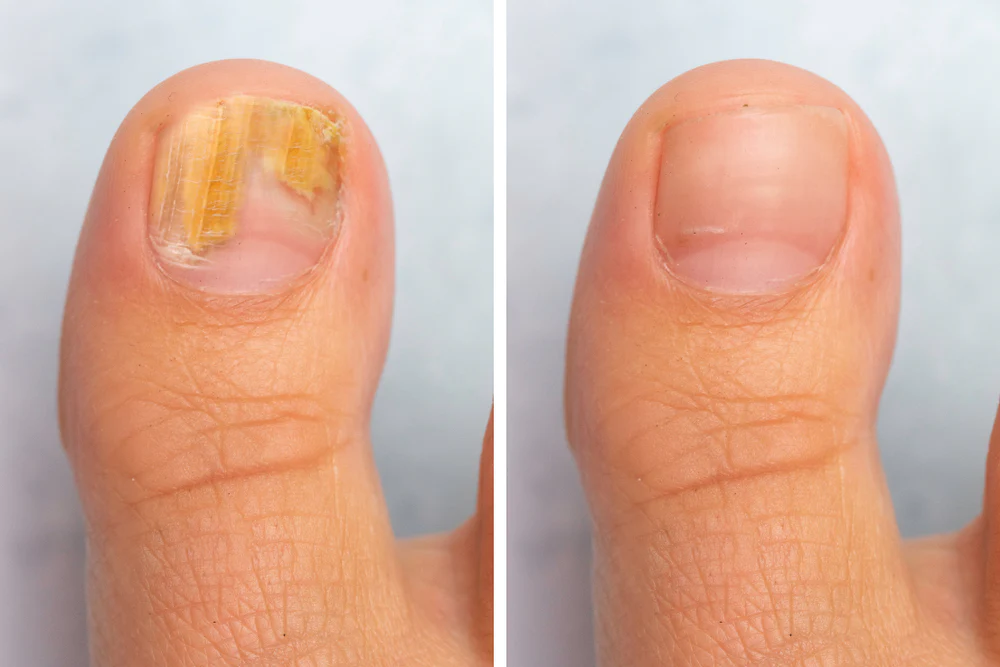Nail fungus is a common condition that can be difficult to treat. While there are several medical treatments available, some people may wonder if cutting away the affected nail is a good option. In this blog, we will explore whether cutting away nail fungus is a good option and provide expert insight from a dermatologist’s perspective.
Understanding Nail Fungus
Before we dive into cutting away nail fungus, it’s essential to understand what causes it. Nail fungus, also known as onychomycosis, is a fungal infection that affects the nails. It typically starts as a small white or yellow spot under the nail and can spread to other nails if left untreated. Nail fungus can cause the nail to thicken, become brittle, and even detach from the nail bed.
Cutting Away Nail Fungus
Cutting away the affected nail may seem like a quick and easy solution for nail fungus, but it’s not always the best option. According to Dr. Maria Gonzalez, a dermatologist at Revitalise London Dermatology Clinic, “Cutting away the nail can be an effective treatment for severe cases of nail fungus that do not respond to other treatments. However, it’s important to have the procedure done by a professional to prevent further damage or infection.”
If you choose to have the affected nail cut away, it’s important to keep the area clean and dry to prevent infection. It may take several months for a new nail to grow back, and it’s important to continue treating the fungus during this time.
Medical Treatments for Nail Fungus
Cutting away the affected nail is not always necessary, as there are several medical treatments available for nail fungus. These treatments include:
Oral medications: Prescription medications taken by mouth are effective in treating nail fungus. However, they can have side effects and may not be suitable for everyone.
Topical treatments: Antifungal creams, lotions, and nail polish can be applied directly to the affected nail. They are less effective than oral medications but may be a good option for mild cases of nail fungus.
Laser therapy: Laser therapy is a non-invasive treatment that uses light to kill the fungus. It’s effective in treating nail fungus and has no side effects.
Expert Insight from a Dermatologist
Cutting away the affected nail should only be done as a last resort, according to our Derrmatologist. “If you suspect you have nail fungus, it’s best to see a dermatologist for an accurate diagnosis and treatment plan tailored to your unique needs. Medical treatments are often more effective than cutting away the nail and can help prevent the infection from coming back.”
If you’re struggling with nail fungus, cutting away the affected nail may not be the best option. At Revitalise London Dermatology Clinic, our experienced dermatologists provide personalised care and effective treatments to help you achieve healthy, clear nails. Contact us today to schedule a consultation and learn more about your treatment options.

